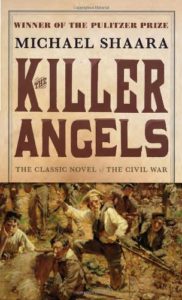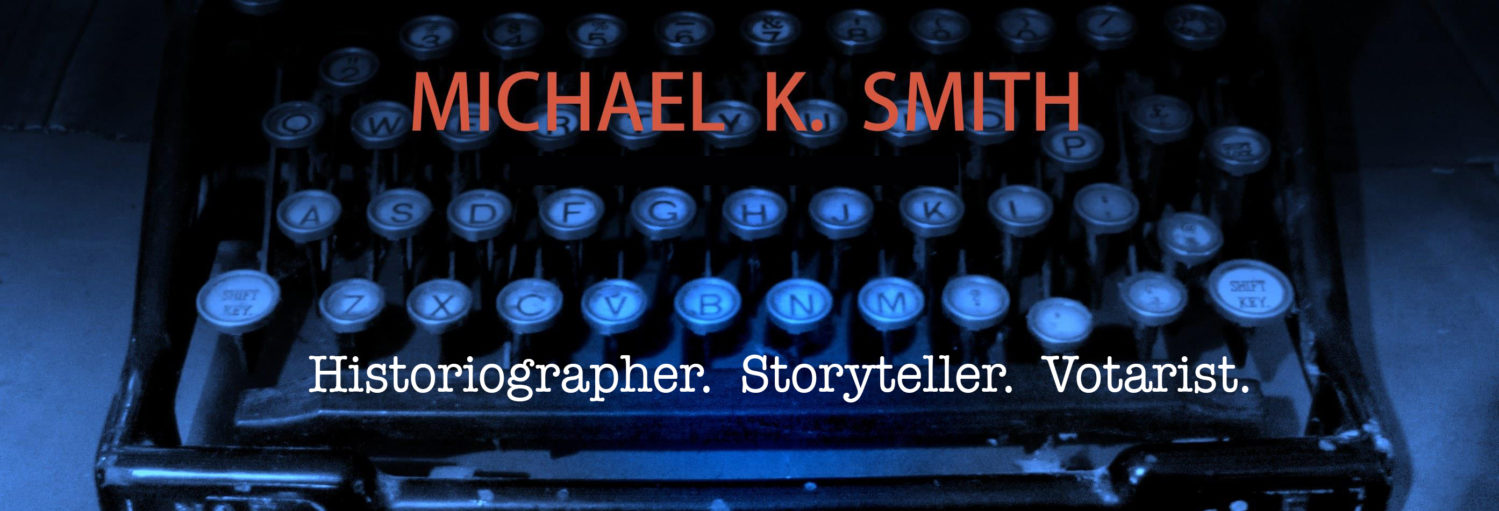 I’ve always been a big non-fiction reader—historical non-fiction. While most such books are not nail-biters, I finished the book with a certain amount of knowledge I didn’t have before. It was that left brain thing again: trying to put two and two together, figuring things out. I would slug my way through all the facts, names and dates with the firm belief I was gaining knowledge and historical understanding.
I’ve always been a big non-fiction reader—historical non-fiction. While most such books are not nail-biters, I finished the book with a certain amount of knowledge I didn’t have before. It was that left brain thing again: trying to put two and two together, figuring things out. I would slug my way through all the facts, names and dates with the firm belief I was gaining knowledge and historical understanding.
Then came The Killer Angels by Michael Shaara and other historical novels which delivered history in a storytelling format. These were a double whammy: I became more knowledgable and, at the same time, I was entertained! The pages flew by and time stood still. Like manna from heaven.
The presentation of accurate facts, dates and names in a story format has been recognized as an effective way to teach history to young students. They learn the history while enjoying the read. In my first book, Home Again, General Albert Sidney Johnston, the commander of the Confederate forces in the western theater, is shot at the Battle of Shiloh. History books tell us nobody really knows who shot him, but the evidence indicated he might have been shot from behind his own lines. I was consulting with Woody Harrell at the time who was past superintendent of the Shiloh National Park. The protagonist in the book, Union sharpshooter Zach Harkin, found himself unnoticed up a tree in an area that was over-taken by the Confederate forces and behind enemy lines. Harkin shoots Johnston wounding him (he died a short time later). I indicated the time as 2:00 in the afternoon. Harrell came back and said, the time was actually about 2:30 so I changed the text. A map in the book indicated the exact spot on the battlefield where this all happened. It’s all there exactly like it was on April 6th, 1862. The fictional part of this action does not interfere with actual facts. This scene is one of the most exciting in the book and the reader will come away with a thorough understanding of the battle, while also entertained.
Another, arguably important component of a good read is often missing in non-fiction: emotion. I read somewhere that historical non-fiction will tell you what happened and historical fiction will tell you how it felt. As emotions cannot be recorded and generally are not part of the written record, a good fiction author can fill in and supply a much more compelling narrative. As an example, on the morning of the third day of the Battle of Gettysburg, Longstreet expresses his doubt as to the efficacy of Lee’s plan to send Pickett on his famous last gasp charge against the entrenched Union forces. Shaara’s Killer Angels captures the emotion and tension of that scene beautifully—using historical fiction. The reader feels like he is there. An impossible feat for most authors of pure non-fiction.
Good historical fiction becomes a favorite genre for both history buffs and fiction lovers. It has something for both the right and left side of our gray matter.

Leave a Reply